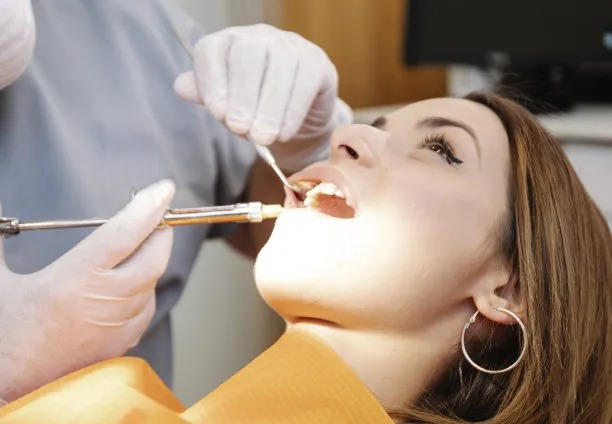Essential Guide to Extract a Tooth Safely and Comfortably in Modern Dentistry Practices
Summary: Extracting a tooth safely and comfortably is a primary concern in modern dentistry. This article provides an essential guide on best practices in tooth extraction, focusing on pre-extraction preparation, anesthesia options, advanced extraction techniques, and post-extraction care. Each of these aspects is crucial to ensuring that patients experience minimal discomfort and a speedy recovery. With evolving technological advancements and procedures, understanding how to navigate the tooth extraction process can significantly enhance the patient experience and ensure optimal outcomes.
1. Pre-Extraction Preparation for Patients

The first step in ensuring a safe and comfortable tooth extraction is proper pre-extraction preparation. This includes a thorough assessment of the patient’s medical history, medications, and any underlying health conditions that might influence the procedure. The dentist typically conducts a comprehensive examination, possibly including X-rays, to assess the tooth’s condition and plan accordingly.
Moreover, educating patients about what to expect during the extraction process can alleviate anxiety and foster a sense of trust. Dentists often take the time to explain the procedure, discuss potential risks, and outline the benefits of the extraction. This communication allows patients to voice their concerns, and feel more involved in their healthcare decisions.
Lastly, setting up a comfortable environment is vital. The dental practice should be welcoming and calming, with staff trained to address patient anxiety. Utilizing calming techniques, such as soothing music and gentle interactions, helps create a supportive atmosphere leading up to the extraction.
2. Proper Anesthesia Techniques and Options
Choosing the right anesthesia techniques is essential in modern dentistry to ensure a pain-free tooth extraction experience. Dentists usually assess the individual needs of patients, deciding between local, sedation, or general anesthesia based on the complexity of the procedure and patient anxiety levels. Local anesthesia is often sufficient for simple extractions, numbing the specific area of the mouth where the procedure will occur.
In cases involving more complicated extractions or anxious patients, sedation may be recommended. Sedation dentistry allows patients to remain relaxed and unaware of the procedure while ensuring they can still respond to the dentists instructions. This approach significantly reduces apprehension and discomfort, enhancing the overall experience.
General anesthesia, although less common, may be necessary for complex cases or when a patient is entirely unable to remain still. With modern monitoring techniques, patients can safely be placed under general anesthesia, ensuring that the extraction is carried out with precision and without pain.
3. Advanced Extraction Techniques in Dentistry
Modern dentistry utilizes advanced extraction techniques that are considerably less invasive than traditional methods. Techniques such as guided tissue regeneration and socket preservation can help minimize bone loss and promote quicker healing after a tooth extraction. Employing dental tools such as piezoelectric devices allows dentists to remove teeth with greater control and accuracy, reducing the risk of damage to surrounding tissues.
Moreover, minimally invasive techniques can result in shorter recovery times and less postoperative pain. Techniques such as flapless surgery make it possible for dentists to extract teeth through smaller incisions, facilitating faster healing and less trauma to the surrounding gums.
Laser dentistry has also emerged as an effective tool for tooth extractions. Using lasers for soft tissue surgery can minimize bleeding, reduce the need for sutures, and lower the risk of infection, leading to a more comfortable recovery for patients.
4. Comprehensive Post-Extraction Care
Post-extraction care is crucial in ensuring patients recover comfortably and effectively following the procedure. Dentists provide patients with detailed aftercare instructions, emphasizing the importance of following these guidelines to prevent complications. This typically includes dietary recommendations, oral hygiene maintenance, and pain management strategies.
Managing pain after an extraction is vital for a smooth recovery. Dentists may prescribe analgesics to alleviate discomfort and suggest ice packs to reduce swelling. Reinforcing the importance of rest and hydration is essential, as these factors significantly influence recovery speed and effectiveness.
Finally, follow-up appointments are essential to monitor healing and address any concerns. Engaging with patients during follow-ups showcases the dentists commitment to their well-being and helps ensure that they heal without complications, thus enhancing overall satisfaction with their dental care experience.
Summary: This comprehensive guide on the essentials of tooth extraction in modern dentistry highlights the importance of pre-extraction preparation, appropriate anesthesia techniques, advanced extraction methods, and diligent post-extraction care. These factors work synergistically to enhance patient experience, reduce anxiety, and promote swift recovery following tooth removals.
Understanding these facets refines the approach to tooth extractions, ensuring that patients feel safe and comfortable throughout the process. Dental practices can foster trust through transparency and thorough care, enhancing the overall patient experience.
This article is compiled by Vickong Dental and the content is for reference only.


